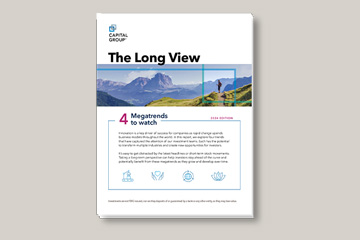Innovation isn’t just a buzzword — it’s the lifeblood of investment success. It fuels growth, drives competitiveness and shapes the future of companies. But while innovation is essential, not all emerging trends are created equal.
That’s why our portfolio managers and analysts are scouring the world for enduring trends that have the potential to transcend individual sectors and impact the broader investing landscape for years to come. Here are four megatrends our investment teams are closely watching.







